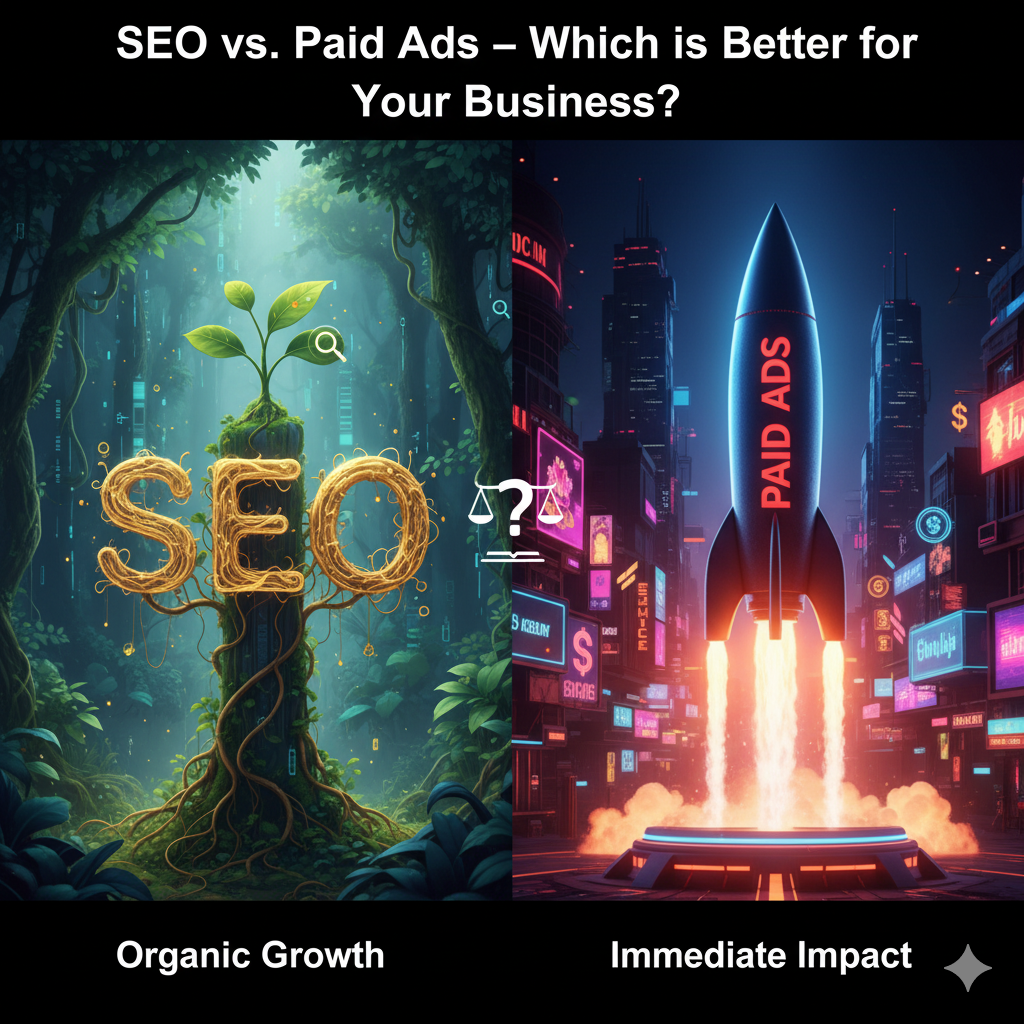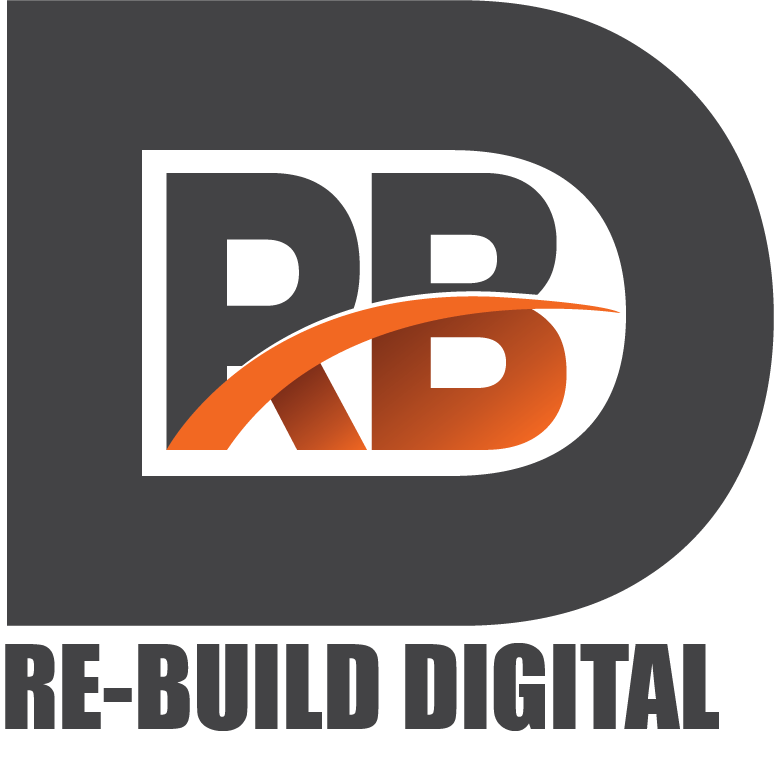
SEO vs. Paid Ads – Which is Better for Your Business?
When it comes to growing your business online, you’ve likely heard two big terms thrown around: SEO (Search Engine Optimization) and Paid Ads. Both are essential to digital marketing, but which one is better for your business? The truth is, there’s no straightforward answer,it depends on your goals, budget, and timeframe. Let’s explore both options, their benefits, and how you can use them effectively to grow your business.
What is SEO?
SEO (Search Engine Optimization) is the process of optimizing your website so that it appears higher in search engine results (like Google) when people search for terms related to your business. Essentially, it helps organically drive traffic to your site. SEO includes things like keyword optimization, content creation, building backlinks, and improving your website’s user experience.
How SEO Works:
Keywords: You target specific search terms that your potential customers are using.
Content Creation: You create high-quality, valuable content that answers the questions users are asking.
On-Page Optimization: You make sure that each page on your website is optimized (title tags, meta descriptions, headings, etc.).
Link Building: You get other websites to link back to your website, which boosts your site’s authority and ranking.
What are Paid Ads?
Paid Ads, also known as Pay-Per-Click (PPC) advertising, involve paying for ad space on platforms like Google, Facebook, Instagram, or other digital networks. Essentially, you pay for every click someone makes on your ad. These ads allow you to target specific audiences based on demographics, location, interests, and behavior.
How Paid Ads Work:
Instant Visibility: When you run an ad, your business shows up immediately on the search engine results page or social media.
Targeting: You can narrow down your audience by location, age, gender, interests, and more.
Budget Flexibility: You can set a daily or lifetime budget, so you control how much you spend.
Ad Types: There are various formats, including text ads, display ads, and video ads.
SEO vs. Paid Ads – A Detailed Comparison
1. Time to See Results
SEO: SEO is a long-term strategy. It can take 3–6 months or more to see significant results because search engines need time to crawl and index your content. But once your website is ranking well, you’ll get consistent, organic traffic without having to pay for it continuously.
Paid Ads: Paid ads give you instant results. As soon as your ad is live, you can start receiving clicks and visits to your website. It’s perfect for driving quick traffic, especially if you’re running a time-sensitive campaign like a sale, product launch, or event.
2. Cost
SEO: SEO is relatively cost-effective in the long term. While there may be initial costs involved in hiring an SEO expert, or investing in tools and resources, you’re not paying for every click. Once your SEO efforts start to pay off, the traffic you get is essentially “free.”
Paid Ads: Paid ads require an ongoing budget. You pay for every click, so the costs can add up quickly. The amount you pay per click (CPC) depends on factors like competition in your industry, your target audience, and the keywords you’re bidding for. If you don’t manage your budget carefully, it’s easy to overspend.
3. Targeting & Control
SEO: SEO allows you to target keywords that are relevant to your business, but the control over who visits your site is limited. You can’t choose exactly who sees your content unless you use advanced targeting strategies, like creating content that specifically answers the most common questions in your niche.
Paid Ads: With paid ads, you have total control over who sees your ads. You can target specific demographics, locations, and even behaviors. For instance, if you’re selling running shoes, you can target people who have recently searched for fitness-related content or follow fitness influencers on social media.
4. Long-Term Value vs. Short-Term Boost
SEO: One of the best things about SEO is that it provides long-term value. Once your site ranks well for a particular keyword, it will continue to drive organic traffic to your website without any additional costs. SEO efforts compound over time,the more you invest, the more visibility and credibility your business gains.
Paid Ads: Paid ads give you a short-term boost, but once you stop paying for them, the traffic stops coming. There’s no lasting value unless you consistently pay for ads. If you stop funding your ad campaigns, you lose that visibility.
5. Credibility and Trust
SEO: Websites that appear organically in search results are often seen as more credible and trustworthy by users. People tend to trust organic listings more than ads. A good SEO strategy builds authority over time, helping your business be viewed as an expert in your field.
Paid Ads: Ads can sometimes be viewed as less trustworthy, especially if users feel they are too intrusive or irrelevant to their needs. However, well-targeted ads that speak to a user’s specific needs can still build trust and generate conversions.
Which Strategy is Right for Your Business?
If You Need Quick Results: Paid ads are the best choice. They give you instant visibility and can drive immediate traffic to your website. They’re also great for time-sensitive promotions, like flash sales or holiday offers. However, they require ongoing investment to keep traffic flowing.
If You’re Looking for Long-Term Growth: SEO is the way to go. It’s slower to show results, but once you build up your rankings, SEO offers sustainable traffic and free exposure in the long run. SEO also helps build your brand’s credibility and authority over time.
Best of Both Worlds: For many businesses, the ideal strategy is a combination of SEO and paid ads. Use paid ads to generate immediate traffic while you work on building up your organic rankings. Over time, as your SEO efforts begin to show results, you can reduce your reliance on paid ads.
Final Thoughts
Ultimately, both SEO and paid ads have their place in a successful online marketing strategy. Paid ads give you speed and control, while SEO offers sustainable growth and credibility. By understanding the strengths and weaknesses of each, you can craft a marketing strategy that aligns with your business goals, budget, and timeline.
